I. HISTORICAL BACKGROUND; THE FRENCH COLONIALISTS' PLOT AND OUR STRATEGIC COMMAND
1. Historical context
After the August Revolution in 1945, the French colonialists had the ambition to use force to re-establish their domination over our country. On September 23, 1945, they opened fire to occupy Saigon, starting the second invasion of Vietnam; then gradually expanded the war, rejecting all the highest efforts for peace of the Government of the Democratic Republic of Vietnam. With the will of "rather sacrifice everything than lose the country, never become slaves" , although the revolutionary government was still young and the people's lives were still full of difficulties, the entire Vietnamese people were still united around the Party and the Viet Minh Front, unanimously rising up to respond to President Ho Chi Minh's call for national resistance, determined to protect the country with a strong belief in the final victory. Implementing the policy of all-people, comprehensive, long-term resistance, relying mainly on our own strength, with rudimentary weapons and the spirit of determination to fight and win, our army and people successively defeated the military plans of the French colonialists, achieving resounding victories: Viet Bac in the fall and winter of 1947, Border War in 1950, creating a fundamental turning point for the resistance war to enter a new phase - the phase in which we launched attacks and counterattacks against the enemy, taking strategic initiative on the main battlefield of the North. Through the victories of the Hoa Binh campaigns (1951 - 1952), Tay Bac in 1952, and Thuong Laos in 1953, our liberated areas were expanded, the People's Democratic Government was consolidated, the revolutionary armed forces matured rapidly; the war situation in Vietnam and Indochina changed dramatically in a direction favorable to our army and people.
2. Conspiracy and plan of French colonialism
Consecutive defeats on the battlefields pushed the French colonialists deeper into a passive and dangerous position. The French People's Movement demanding an end to the war grew stronger. To save the situation, the French Government on the one hand asked for more aid from the United States, on the other hand changed the command and battle plan in an attempt to find an honorable way out with a military victory.
In May 1953, with the support of the United States, the French Government appointed General Henri Nava, Chief of Staff of the French Army of the North Atlantic Treaty Organization (NATO) stationed in Central Europe, as Commander-in-Chief of the French Expeditionary Force in Indochina. After surveying and studying the battlefield, Nava proposed a comprehensive military plan (later known as the Nava Plan), which was approved by the French Government and Defense Council on July 24, 1953.
The central task of the Nava plan was to organize a main combat force three times the number of existing troops by 1954, divided into two steps: (1) In the Fall - Winter of 1953 and Spring of 1954, maintain a strategic defensive position north of the 18th parallel, defend upper Laos; attack and pacify the South and Central Indochina; eliminate the free zone of Inter-Zone V; (2) If the first step was achieved, we would switch to a strategic offensive in the North, gain great military victories, and force us to negotiate under conditions favorable to them. The Nava military plan was the highest effort of France and the United States in the Indochina war with the hope of turning defeat into victory within 18 months. To implement this plan, France increased expeditionary troops, expanded the mobile army, actively recruited young people into the puppet army, and developed bandits in the mountainous areas. In the summer and fall of 1953, the enemy launched dozens of large and small sweeps in the North, Binh Tri Thien, and the South, fiercely attacking our bases; in July 1953, they sent paratroopers to attack Lang Son; in August 1953, they withdrew their forces from Na San to reinforce the Northern Delta.
In mid-November 1953, our main force carried out a plan to advance to the Northwest, a part of which advanced to Central Laos to coordinate the fight with the Pathet Lao Army. Faced with that situation, Nava was forced to parachute troops into Dien Bien Phu to block our advance. Nava's plan was disrupted, and they had to disperse their forces to deal with us. Nava concentrated all efforts, with great help from the US, to build Dien Bien Phu - a position of strategic significance not only for Northwest Vietnam but also for Upper Laos and Northern Indochina into the strongest group of strongholds in Indochina, "an impregnable fortress" , consisting of 49 strongholds, divided into three mutually supporting sub-areas, with a solid defensive structure. The enemy concentrated here more than 16,200 troops including 21 battalions, including 17 infantry battalions, 3 artillery battalions, 1 engineer battalion, 1 tank company, 1 air squadron, and 1 motor transport company, with the intention of challenging our army and people and crushing our main force.
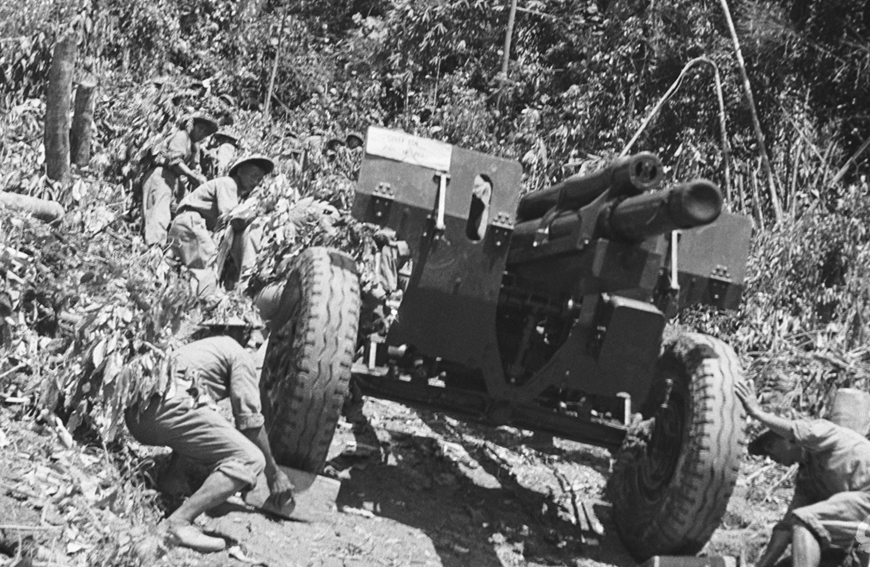
3. Our strategic direction and preparation
Realizing the tricks of the French colonialists, at the end of September 1953, the Politburo of the Party Central Committee met to discuss military tasks, deeply analyzed the strategic situation between us and the enemy, and issued a resolution approving the 1953-1954 Winter-Spring combat plan, maintaining the initiative to fight the enemy on both the front and behind the enemy's rear, coordinating nationwide and throughout Indochina, emphasizing the fighting motto: "active, proactive, mobile, flexible" . The Politburo's resolution was thoroughly disseminated to all levels and sectors; the General Staff set up specific combat plans for the battlefields; the plans for coordinating combat operations between us and Laos and Cambodia were also fully agreed upon by the committee; all preparations and force organization work were vigorously deployed.
To coordinate with the 1953-1954 Winter-Spring strategic offensive, our Party and Government advocated launching an attack on the enemy on the diplomatic front. On November 26, 1953, President Ho Chi Minh clearly stated the viewpoint of our people: "... The basis of the ceasefire in Vietnam is that the French Government sincerely respects the true independence of Vietnam" which created a great resonance, attracting the attention, sympathy and support of the French people and peace-loving people of the world for Vietnam's just resistance.
On the basis of firmly grasping all enemy plots and actions, analyzing and assessing the situation accurately and scientifically; in early December 1953, the Politburo decided to launch the Dien Bien Phu Campaign, approved the operational plan of the General Military Commission and assigned General Vo Nguyen Giap, Politburo member, Minister of National Defense, Commander-in-Chief of the army, to directly act as Party Secretary and Commander of the front. President Ho Chi Minh instructed "This campaign is a very important campaign, not only militarily but also politically, not only domestically but also internationally. Therefore, the entire army, the entire people, the entire Party must concentrate on completing it successfully"; instructed General Vo Nguyen Giap: must win, must win only if sure of victory, must not fight if not sure of victory. Along with that, the Government decided to establish the Front Supply Council with comrade Pham Van Dong as Chairman. With the special significance of the campaign, the Politburo and the Central Military Commission decided to concentrate the main elite force including 04 infantry divisions, 1 artillery division with a total strength of over 40,000 officers and soldiers. In compliance with the Politburo's decision, all preparations for the campaign were carried out urgently. The whole country concentrated its strength on the Dien Bien Phu front with the slogan "All for the front, all for victory".
The main army units quickly gathered, day and night clearing forests, cutting mountains to open roads, hauling artillery, building battlefields, ready to attack the enemy. The entire vast rear of the country, from the free zone of Viet Bac, Inter-zone IV, the newly liberated area of the Northwest to the guerrilla zones and guerrilla bases in the Northern Delta, the newly liberated area in Upper Laos, all concentrated their manpower and resources with more than 260,000 laborers and youth volunteers, regardless of bombs and bullets, heading to Dien Bien to ensure logistics for the campaign.
To facilitate the decisive battle at Dien Bien Phu, the General Command ordered the main units to coordinate to launch strong attacks on the battlefields: (1) Attack Lai Chau, threatening Dien Bien Phu from the north; (2) Coordinate with the Lao Liberation Army to launch an attack campaign into Central Laos; (3) Advance deep into Lower Laos and Eastern Cambodia; (4) Attack on the Northern Central Highlands front; (5) Coordinate attacks on the enemy's defense line in Upper Laos. With the above 5 strategic moves, we not only destroyed many enemies, liberated many large areas of land, but also bankrupted Nava's plot to concentrate mobile forces in the Northern Delta, forcing them to disperse to different places to deal with us. At the same time, in the midland and Northern Delta battlefields, our army and people also attacked strongly on the outer lines and behind the enemy's back; localities in Binh Tri Thien, South Central, and South stepped up military and political attacks, combined with "pseudo-promotion" to coordinate with the main battlefield.
II. PROGRESS AND RESULTS OF THE CAMPAIGN
On January 25, 1954, our army units were in the assembly position, ready to open fire according to the combat motto of "fight fast, solve quickly" . Realizing that the enemy had strengthened their defenses in Dien Bien Phu, the Command and the Party Committee of the campaign changed the combat motto to "fight firmly, advance firmly" . This was the right decision, but we also encountered many difficulties: the combat time was longer, the change in fighting style meant that we had to prepare from the beginning, especially the organization and arrangement of the campaign's firepower system. With the rugged terrain, pulling artillery into the concentrated position was extremely difficult, now we had to pull artillery to disperse to new positions on high points to form an arc surrounding the Dien Bien Phu stronghold, firing directly at targets in the basin was even more difficult. However, with a courageous spirit, not afraid of hardship and sacrifice, our army and people have found every way to overcome challenges and excellently complete their missions.
After the preparations were completed, on March 13, 1954, our army opened fire to attack Dien Bien Phu. The campaign took place in three phases over nearly two months:
Phase 1: From March 13 to March 17, 1954, our army cleverly and bravely destroyed the Him Lam and Doc Lap strongholds, forced the Ban Keo stronghold to surrender, broke the defense system in the North and Northeast of the Dien Bien Phu stronghold; opened the door for our army to advance to the basin and the central area. The enemy's two most elite battalions were completely destroyed, another battalion and three puppet Thai companies disintegrated. A large number of enemy 105mm artillery and 120mm mortars were completely destroyed, and most of the enemy's fighter planes in the basin were destroyed.
Phase 2: From March 30 to April 26, 1954, our troops simultaneously attacked the strongholds in the East of the central sub-region. We destroyed about 5,000 enemies, including 4 battalions and 9 companies (accounting for about half of the total enemy troops in the North and Central sub-regions); controlled most of the high points in the East, developed the battlefield close to the airport, tightened the siege, divided, controlled the remaining areas in the Dien Bien Phu stronghold, controlled Muong Thanh airport, and limited enemy reinforcements to the stronghold.
Phase 3: From May 1 to May 7, 1954, our army captured the remaining bases in the East, destroyed some bases in the West and launched a general attack to destroy the entire Dien Bien Phu base. At 5:00 p.m. on May 6, 1954, our artillery and rockets fired fiercely at enemy bases, opening the way for infantry to attack. At hill A1, after detonating 1 ton of explosives to destroy the enemy's underground bunker, our troops divided into many groups, following the trenches to attack the top of the hill. At 5:30 p.m. on May 7, 1954, General De Castries and the entire General Staff of the Dien Bien Phu base were captured alive. That same night, our army continued to attack the Southern sub-sector, forcing the enemy to flee to Upper Laos. By 10:00 p.m., all enemy troops had been taken prisoner.
After 56 days and nights of "digging mountains, sleeping in tunnels, eating rice balls in the rain", fighting bravely, intelligently and creatively, our army and people destroyed the entire Dien Bien Phu stronghold, destroyed and captured all enemy troops, shot down 62 planes, seized 64 vehicles and all of the enemy's weapons, warehouses, military equipment and supplies. The historic Dien Bien Phu campaign was a complete victory, this is the heroic epic of the miraculous People's War, "recorded in national history as a Bach Dang, a Chi Lang or a Dong Da in the 20th century, and entered world history as a brilliant feat of breaking through the stronghold of the colonial slavery system of imperialism" .
III. NINH BINH PROVINCE IN THE DIEN BIEN PHU CAMPAIGN
During the historic Dien Bien Phu campaign, the Provincial Party Committee, the Administrative Resistance Committee of Ninh Binh Province and the Ninh Binh Provincial Military Command mobilized, organized and directed the army and people in the province to concentrate on two important tasks at that time: Strive to serve the frontline to win and take advantage of the opportunity, actively attack the enemy in the province, liberate the homeland. From December 1953, the people and armed forces of Ninh Binh enthusiastically participated in the preparation for the campaign.
The Provincial Party Committee and the Provincial Administrative Resistance Committee established a Front Supply Committee headed by a member of the Provincial Party Committee and a member of the Provincial Administrative Resistance Committee. The people, militia, and guerrillas of all ethnic groups in the liberated districts of Nho Quan, Gia Vien, and Gia Khanh participated in many efforts to build camps, warehouses, and to build and protect the No. 1 forward military station of the General Department of Supply located in Nho Quan. Along Routes 59, 12, and 21, the "people's champions" from the Quang Trung campaign (May 1951) reappeared, effectively serving the troops and laborers on their way to the front. Tens of thousands of laborers from Ninh Binh carried rice day and night, transported weapons, ammunition, and medicine to Dien Bien to supply the troops. The bicycle pack teams of the liberated districts and the temporarily occupied areas, including Gia Vien's team with 150 people, hurriedly transported rice from the No. 1 forward military station in Nho Quan to the foot of Pha-din pass, and continuously broke the initial quota of 70 kg to reach an average record of 150 kg. When the troops strongly attacked the enemy in the Dien Bien base, Ninh Binh's bicycle pack team had the additional task of transporting wounded soldiers to the rear.
To ensure timely supply of rice for soldiers, laborers fighting and serving the battle at the front, Ninh Binh also mobilized hundreds of workers to the frontline to build mills and make rice pounding mortars. Many people even brought their own mills to serve the frontline. The work of mobilizing rice for the frontline was directed by the provincial and district supply committees to be carried out urgently and vigorously. Catholics from the liberated areas to the long-occupied areas such as Yen Khanh and Kim Son all voluntarily contributed. Receiving the urgent task, within just 24 hours, Ninh Binh mobilized 600 tons of rice to send to the frontline.
The military enlistment movement took place vigorously, attracting thousands of young men and militiamen to eagerly go to battle to kill the enemy and make achievements. The military enlistment targets assigned to Ninh Binh by the Inter-zone every year were always met and exceeded, and this time they exceeded them in terms of quantity, quality and time. In April 1954 alone, Ninh Binh had 3,716 young men recruited to join the army, promptly supplementing the main force of the Ministry with 1,800 people, the region with 950 people and the local forces of the province and district with 966 people.
While devoting all their efforts to serving the Dien Bien Phu campaign from the preparation to its successful conclusion, the army and people of Ninh Binh took advantage of the opportunity to launch a major attack and achieve great victories on the Dien Bien Phu front and in the enemy's rear. The 320th Division broke through the defense line on the left bank of the Day River, advanced deep into Nam Dinh and Ha Nam, continuously attacking and defeating all the enemy's last efforts in their homeland.
In late 1953 and early 1954, we organized a raid to destroy the Binh Hoa concentration camp (Yen Mo), burning and destroying 20 houses. From March 1954, from the experience of previous successes and failures, on the one hand, we sent armed propaganda teams to infiltrate the enemy's concentration camps to propagate, educate, and organize the people to fight; on the other hand, we sent relatives of the people outside the liberated areas to visit, encourage, and persuade the people to return to their old villages. Therefore, on March 20, 1954, more than 300 people in the Kim Son and Tam Chau "resettlement" camps rose up to burn the camps, return to their old villages to live; creating an uprising movement of thousands of people imprisoned and restrained in the concentration camps to rise up and break out of the camps and return to their hometowns when the French army withdrew from the province.
On March 21, 1954, 5 guerrillas from Khanh Thien commune used tricks to shout and create diversions, chasing an entire enemy company away to capture people and rob at Do Muoi position, freeing some civilians and 2 cadres, and retrieving 2 boats loaded with rice, salt and other goods. Also in March 1954, Khanh Thien guerrillas continuously harassed, surrounded and controlled Tam Chau outpost and Tam Chau airport, used rifles to shoot down an enemy Dakota plane, and killed a number of French officers on board. Yen Thai (Yen Mo) guerrillas proactively surrounded the Oro mountain position in Tri Dien village; at the same time, they blocked food supply waves on the river, sinking 5 enemy rice boats. Khanh Hoa, Khanh Van, Ninh Son guerrillas and traffic combat teams continuously planted spikes and mines on the traffic routes, controlling more than 10 km of Highway 10.
In April 1954, local troops and guerrillas in the province fought many battles against the enemy, killing 121 enemies, destroying 5 tanks, 17 trucks, 6 artillery pieces and machine guns.
Combined with military attacks, from the beginning of the year, promoting the victory, the army and people of Ninh Binh stepped up political attacks on the enemy by mobilizing puppet soldiers to desert, demobilize, surrender or act as internal agents for us to destroy forts and posts; at the same time, mobilizing families of dangerous soldiers to participate in the movement to demand their husbands and children return from the army, mobilizing and organizing a nationwide movement to fight against the enemy's conscription. The struggle against the enemy's herding of people into disguised concentration camps under the so-called "residence" camps to act as a shield to protect their lairs in Phat Diem, Phuc Nhac and separate our people from the influence of the resistance was also organized and implemented with certain effectiveness. Before the day the enemy withdrew from the province, we had propagandized, educated and mobilized 1,071 puppet soldiers to desert, mutiny to demobilize and surrender, fought to reclaim and keep 723 young men from having to join the army.
Responding to the requirements of the Dien Bien Phu campaign, both fighting to protect the free zone and liberating the temporarily occupied enemy zone, the army and people of Ninh Binh, under the leadership of the Party Committee, together with the people of the whole country, devoted themselves to completing the combat missions, serving the fight, consolidating the rear, contributing to the great victory of the whole country, culminating in the great Dien Bien Phu victory.
IV. CAUSES OF VICTORY, HISTORICAL SIGNIFICANCE AND LESSONS LEARNED FROM THE DIEN BIEN PHU CAMPAIGN
1. Reasons for victory
The victory of the resistance war against the French colonialists, culminating in the Dien Bien Phu Victory, was a victory of the passionate patriotism, indomitable will and resilience of the Vietnamese people, forged over thousands of years of history; it was a victory of the independent, correct and creative resistance and military lines of our Party, headed by President Ho Chi Minh.
Right from the first days of fighting against the French colonialists, the Party led our people to carry out a comprehensive, all-people resistance war, relying mainly on our own strength; building a people's armed force consisting of three types of troops (main force troops, local troops, and militia and guerrillas) as the core for the entire people to fight the enemy, closely combining guerrilla warfare with regular warfare; military offensives, enemy agitation and uprisings of the masses; military struggle with political, economic, cultural and diplomatic struggles.
Our people from rural to urban areas, from mountainous to lowland areas, from young to old, following the call of the Party and President Ho Chi Minh, have promoted the spirit of patriotism and revolutionary heroism to the highest extent, striving to build a solid rear, competing to kill the enemy and gain achievements, contributing human and material resources to ensure the battlefield, adding to the determination to fight and win for the forces on the front.
Our army has grown remarkably in political ideology, force, command organization, combat level, military equipment and logistics support for an unprecedented large-scale military campaign; officers and soldiers are intelligent and creative, overcoming all difficulties and challenges, strictly following battlefield orders, bravely sacrificing themselves to achieve many feats, and excellently completing their missions on the Dien Bien Phu battlefield. In combat and combat service, many typical examples of resilience, bravery, intelligence and creativity have emerged, such as: To Vinh Dien and Nguyen Van Chuc sacrificed themselves to protect the artillery, Be Van Dan used his body as a gun mount, Phan Dinh Giot used his body to fill the loopholes and many other examples of fighting and heroic sacrifice have further brightened the patriotic tradition of the heroic Vietnamese people.
During the long and arduous resistance war, the Vietnamese people received strong support and valuable assistance from fraternal socialist countries, and from the people of oppressed nations in Asia, Africa, and Latin America, especially the fighting alliance between the three Indochinese countries and the struggle movement of progressive peoples around the world, including the progressive people of France.
2. Historical significance of the Dien Bien Phu victory
Firstly, it was the peak of the resistance war against the French colonialists, creating the fundamental and decisive basis for the signing of the Geneva Agreement on the cessation of hostilities in Vietnam.
The Dien Bien Phu victory marked the end of the stubbornness and belligerence of French colonialism and American imperialism at the Conference table, forcing the French Government and the warring parties to sit at the table and sign the Geneva Agreement (except the US) to suspend hostilities in Vietnam, Laos, and Cambodia on July 21, 1954. This was also our decisive victory on the diplomatic front, raising Vietnam's position in the international arena, contributing to ending the French colonialist war of aggression in Vietnam.
Second, opening a new revolutionary stage, bringing the North to transition to socialism, creating a solid rear for the cause of fighting to completely liberate the South and unify the country.
The Dien Bien Phu victory brought a successful end to the resistance war against French colonialism, creating fundamental changes in all areas: economy, politics, military, culture, diplomacy... for the Vietnamese revolution and opening a new stage: the North advanced to socialism, the South continued the People's national democratic revolution. The achievements in building socialism as well as the contributions of the Northern rear to the great frontline in the South strengthened the belief of the people of both regions in the final victory of the resistance war.
Promoting the spirit of Dien Bien Phu victory - "independence, self-reliance, determination to fight, determination to win", creatively applying Marxism-Leninism and Ho Chi Minh thought, we have achieved many great victories, defeated the war strategies of the invading US imperialists and their vassal armies, liberated and unified the country, and led the whole country to socialism.
Third, affirming the Party's correct and creative resistance line and the growth and maturity of the Vietnam People's Army
The victory of Dien Bien Phu proved the truth: In this day and age, a small country, an economy slowdown if there is a true Marxist party leader with political and military policies properly, promoting the strength of the whole nation, agreed by the people of the world, supporting to defeat all enemies, even though with economic and military potentials much stronger.
The historic victory of Dien Bien Phu also showed the outstanding maturity of the Vietnam People's Army. From 34 soldiers with rudimentary weapons in 1944, under the leadership of the Party and President Ho Chi Minh, our army was constantly growing, the more he mature. This is the basis for the entire Party, the entire people and our entire army to promote the revolutionary heroism, confidence, dare to fight, to fight, determine and defeat the American invaders, completely liberate the South and reunite the country.
Fourth, ending the domination of French colonialism in the three Indochinese countries, opening the collapse of the old colonialism on a worldwide scale
The victory of Dien Bien Phu contributed to awakening and encouraged the oppressed peoples in the world to struggle for independence and freedom of the nation; Forcing the French government to end the policy of colonial rule, to conduct independence to many countries in Asia and Africa, and at the same time review its position and policies to other countries that are old colonies. Vietnam is a pioneer, a shining symbol in the movement of national liberation, demolishing old colonialism, opening a new history for humanity, contributing to changing the world situation. Giuyn Roa, journalist and historian, former Colonel of the French Extraordinary Army affirmed: "worldwide, Oatélô previously did not resonate, Dien Bien Phu fell terribly horrifying. It was one of the biggest defeats of the West, informing the collapse of the colonial empires and the common praise of a Republic."
3. Lesson learned
"The victory of Dien Bien Phu has ended a long, long -term, arduous resistance of the army and people of our country against the French colonialists and the US intervention. This is the great victory of our people and also the common victory of all oppressed peoples in the world. The victory of Dien Bien Phu has brightened the truth of Marxism - Leninism in this day and defense of the war of the imperialist, defeating the war of the Ethnic Minority. Cong " [1] . From this great victory, we can draw valuable lessons:
- Firstly, identify the right resistance policy, conduct the people's war, the entire people, comprehensively, both resistance and national ants and fight hunger, ignorant, and fight foreign invaders, creating a combination of victory of all invaders.
- Secondly , promote the spirit of patriotism, the will to fight, the victory of the whole Party, the whole army and the entire people.
- Third,, Promoting the spirit of independence and autonomy, self -reliance, creativity, exploration and identification of the Vietnamese revolutionary and military art.
- Fourthly , building the strength of the great unity bloc of the entire nation, the core is the Union of Workers - Farmers - Intellectuals under the leadership of the Party and President Ho Chi Minh.
- Fifthly , closely combining national strength and era strength, domestic strength with the support and assistance of international friends.
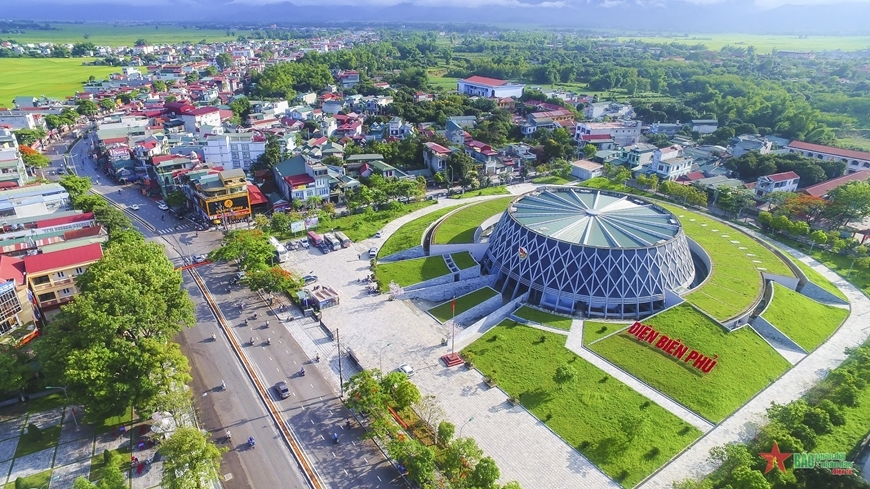
V. Promoting the spirit of Dien Bien Phu victory in the cause of building and defending the Socialist Republic of Vietnam
Following the historic victory of Dien Bien Phu in 1954, our nation continued the brilliant hero in Ho Chi Minh era, creating glorious feats: the victory "Hanoi - Dien Bien Phu in the air" in 1972, the historic Ho Chi Minh campaign in 1975, completely liberating the South, unifying the country, the whole country went to build socialism; firmly protect independence, sovereignty, unity and territorial integrity.
In nearly 40 years of innovation, Grasping the advantages, opportunities, overcoming difficulties, challenges, the whole Party, the entire people and our entire army has promoted the spirit of patriotism, solidarity, determination, bravery, creativity, efforts to strive to achieve many important achievements, creating many prominent marks; The country grows rapidly and sustainably; The people's beliefs for the Party, the State and the socialist regime are increasingly strengthened and improved. Compared to the previous years of innovation, our country has developed strongly and comprehensively in the fields: scale and economy level was raised, of which the GDP scale at the price of 2022 reached USD 409 billion increased by 10 times compared to 2000, an increase of 29.2 times compared to 1985 (US $ 14 billion), in 2023 was estimated at US $ 435 billion; Vietnam is a country with a high economic growth rate in the region and around the world, GDP in 2022 increased by 8.02% compared to the previous year, 2.5 times higher than the inflation rate, the highest in the period of 2011 - 2022, 2023 growth rate reached 5% (quite in the world). This is a "proud difference" in the context of the world facing high inflation and the lowest growth in the past 40 years, is a bright spot "in the gray picture" of the global economy. Stable basic macroeconomic; The great balance of the economy is generally guaranteed; The work of hunger eradication and poverty reduction achieved many important results, recognized and appreciated by international friends; Social and social development, people's life both physically and mentally improved significantly. Building the Party and the political system is increasingly clean and strong; The strength of the great national unity was strengthened, socialist democracy continued to be promoted; National defense - security is maintained and strengthened. International integration is increasingly in depth. Currently, Vietnam has diplomatic relations with 193 countries around the world, including comprehensive strategic partnerships and strategic partners with all Standing United Nations Council members and G20 countries, and members of many large international organizations; If 30 years ago we have economic and trade relations with nearly 30 countries and territories, then by 2023 is 230 countries and territories ... "With all humility, we can still say: Our country has never had the mechanical, potential, position and international reputation as today" [2] .
In recent years, our Party and State have built, promulgated and organized many guidelines, policies and priority and interest for comprehensive development of the Northwest region. Along with that, the Party Committee and people of the Northwest provinces have focused on building a strong political system, exploiting and developing socio -economic and social development of localities in the region; focus on the areas of the region's strengths, developing tourism economy in association with culture, history and ecology; Closely combining economic development and national defense, security, building a solid defense area, creating many great changes in appearance and development; An important contribution to ensuring the stability and development of the whole country.
With Dien Bien province, promoting the spirit of Dien Bien Phu victory, the province has focused on building and strengthening the political system, focusing on exploiting the potentials and strengths of the province, the socio -economic aspects are maintained stably and continuously developed. For many years, Dien Bien maintained a good economic growth rate, in 2022 alone, Dien Bien ranked second in the growth rate among 14 midland and mountainous provinces in the North, ranked 24/83 of the provinces in the country; The economic structure shifts in a positive way. The business investment environment has been improved, attracted good investment, administrative reform changes clearly; The province's socio -economic infrastructure continues to be strengthened, the face of the urban area and many rural areas change and progress; Social security is guaranteed, the percentage of poor households and near -poor households decreases, the lives of people of all ethnic groups have gradually improved. The monuments of the battlefield of Dien Bien in the past such as: Hill A1, C1, C2, D1, Base of Red Flods, Him Lam, Dam Lap Hill, Muong Thanh Bridge, Muong Thanh Airport and Tunnel of the Dien Bien Phu Base Group were preserved, preserved and promoted, becoming an attractive tourist destination for domestic and foreign tourists.
With Ninh Binh province, promoting the spirit of the victory of Dien Bien Phu, the historical tradition and revolution of the heroic homeland, entering the renovation period, especially from April 1, 1992, after more than 30 years of Ninh Binh province has been re -established so far , the Party Committee, the army and the people of Ninh Binh have continued to raise the tradition of solidarity, dynamism, creativity, the will of self -reliance, self -reliant and comprehensive aspirations . After nearly 40 years of implementing the renovation process, over 30 years of re -establishing the province , Ninh Binh from a poor province, purely agriculture, backward and fragmented agriculture has become a province with strong economic development in the direction of industrialization and modernization; Infrastructure is increasingly synchronous and modern; is one of the leading 3 automobile production and assembly centers in the country. Tourism is always among the top 15 destinations, 10 provinces with the highest number of visitors. 100% of districts and cities meet the standard or complete the task of building a new countryside. Since 2022, Ninh Binh has become the locality to balance the budget and regulate the central level. The fields of culture and society are interested in comprehensive, synchronized and equal development with economic, military and defense development in the local. The political system was built, consolidated, ensured clean, strong, effective and effective, especially, on March 4, 2024, the Prime Minister issued Decision No. 218/QD -TTg approving the planning of the period of 2021-2030, vision in 2050, with the goal of 2035 Ninh Binh is a city directly under the civilized, modern, intelligent, unemployment of the city.
It is forecasted that in the coming years, the situation of the world and the region will continue to have many rapid, complicated and unpredictable changes. Besides the opportunities and advantages, there will be many difficulties and complex challenges that arise; The world economy has decreased, strategic competition, economic competition, and trade wars continue to be fierce; Disputes over sovereignty over islands and islands are complicated; The military conflict between Russia - Ukraine, especially the Israeli - Hamas conflict and the American and Western sanctions on Russia may still last, affecting geopolitical, geographic, energy security and global supply chain; Science and technology and the fourth industrial revolution have been strongly developed; Climate change, natural disasters, epidemics and traditional and non -traditional security issues are increasingly strong, many aspects, which can seriously threaten stability and sustainable development. In the country, although we have achieved important and very proud achievements, our country is still facing many difficulties; The serious influence of Covid pandemic; The four risks of our Party determine still exist; The political and cultural environment continues to be affected by social evils, corruption and negative. The hostile forces are still constantly increasing "peaceful evolution", taking advantage of the issue of religion, ethnicity, democracy, human rights ... to interfere with the internal affairs of our country, to fight against the Party, the State and the renovation cause of our people.
That situation requires the entire Party, the entire people and the whole army to constantly raise the revolutionary vigilance, promote internal strength; Promote the strength of the great unity bloc of the entire nation, the core of the Union of Workers - Farmers - Intellects under the leadership of the Party; maintain and strengthen the unity of the people and militia and solidarity with the people and the army of all countries; Combining national strength and era strength, creating opportunities, overcoming challenges, resolutely and persistent struggle to firmly protect independence, sovereignty, unity and territorial integrity of the Fatherland, protect the Party, the State, the people, the socialist regime, culture and national and national interests; maintain the peaceful environment, political stability, national security, human security; Building social, disciplined, safe and healthy society to develop the country in accordance with socialist orientation; At the same time, there is a plan to prevent the risk of war, conflict, firmly defending the Fatherland early and from afar.
Today, promoting the spirit of Dien Bien Phu victory, we need to continue to thoroughly grasp the views and policies of our Party and State on building and defending the Fatherland; Continuing to build and strengthen the strengthening of the great unity bloc, widely gathering all classes of people, ensuring high unity in ideology and actions, consistent with the goal of national independence and socialism, resolute, persistent to protect, maintain independence and national sovereignty; Inheriting and promoting the tradition of the nation, attaching importance to and maintaining the peaceful and stable environment for socio -economic development, industrialization and modernization of the country; Promote friendship, cooperation, and development with other countries in the world, creating a beneficial interwoven on the principle of respect for independence, sovereignty and territorial integrity, not interfering with each other's internal affairs; resolving disputes and disagreements in peace methods; Do not use force or threaten to use force with other countries.
Persevering the national defense policy, the people's war is associated with building a political system from the central to strong facilities. Maintain independence, autonomy, self -reliance, based on internal resources; closely combining national defense and security, foreign affairs, economy, culture and society; economic development associated with national defense and security protection; Building and constantly improving the general strength of the country. The people's armed forces, the core of the People's Army and the People's Police, continues to promote the leading role in building the national defense, strong people's security; Building the People's Army, the People's Police of the Revolutionary, Regular, Elite, step by step modern, some army, army and force moving straight to modern. Building Party committees and party organizations in the army and police clean, strong in politics, ideology, ethics, organizations and officials; educate and train officials and soldiers to be absolutely loyal to the Fatherland, the Party, the State and the people, steadfastly with the Party's revolutionary goals and ideals, contributing to improving the quality of synthesis and combat strength, meeting the requirements and tasks in all situations. Building a strong reserve force and a strong and widespread militia in all regions, regions and sea. Promote propaganda and education to raise awareness and responsibility of the whole Party, the entire people, the whole army, the levels, sectors, each cadres, party members and people on the task of strengthening national defense, security and defense of the Fatherland. Proactively fight against "peaceful evolution", "overthrow riots", prevent and prevent "self -evolution" and "self -transforming" and "self -transforming", ensuring economic security, media security, network security and social security. Handling harmoniously ethnic, religious and social issues, not letting the hottest spots occur, especially for the Northwest region. Constantly improving the material and spiritual life and strengthening the people's beliefs towards the Party and the State, the socialist regime, the cause of innovation, industrialization, modernization and international integration.
The 70th anniversary of the victory of Dien Bien Phu (May 7, 1954 - May 7, 2024) is an opportunity for us to be more proud of the Vietnamese Communist Party Quang Vinh, about the great President Ho Chi Minh, who led the Vietnamese revolution to overcome many difficulties and challenges, have won increasingly big victories. The historic victory of Dien Bien Phu is forever pride, a great source of power, encouraging the whole Party, the entire people and the whole army to strive to successfully implement the field of building the country in the transition period to socialism (supplementing and developing in 2011), Resolution of the 13th National Party Congress of the Party, arousing the desire to develop the prosperous and happy country; Striving in the middle of the 21st century, our country became a developed country in the socialist orientation.
Propaganda Department of Ninh Binh Provincial Party Committee
Source


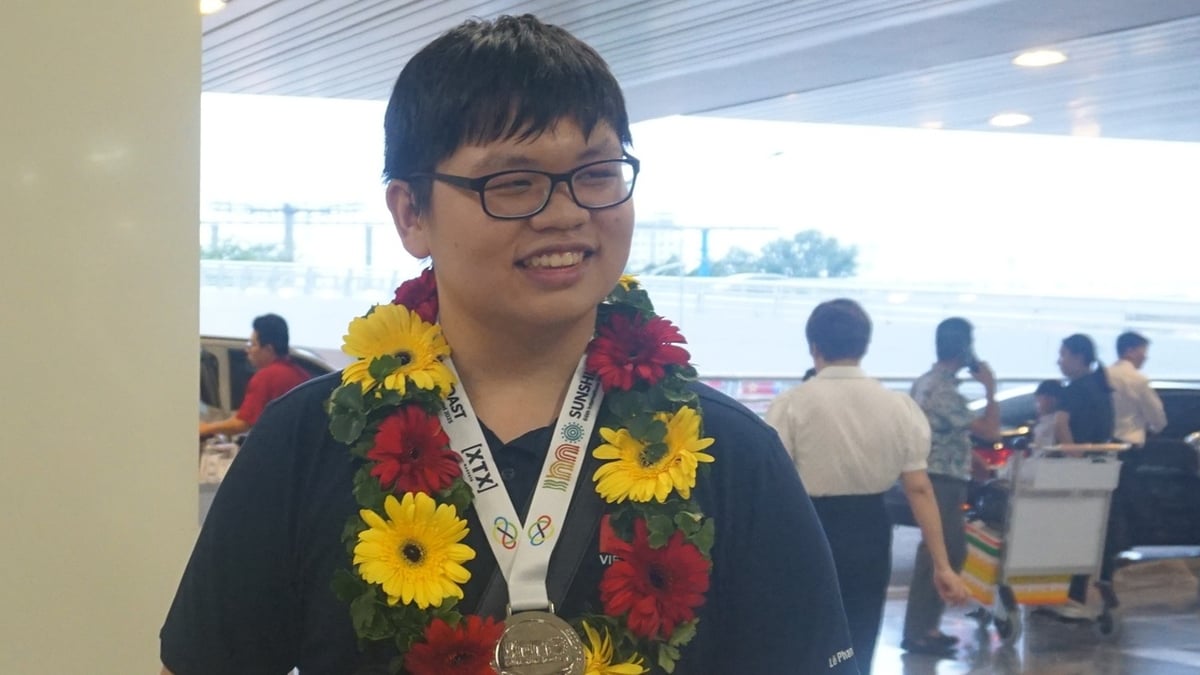

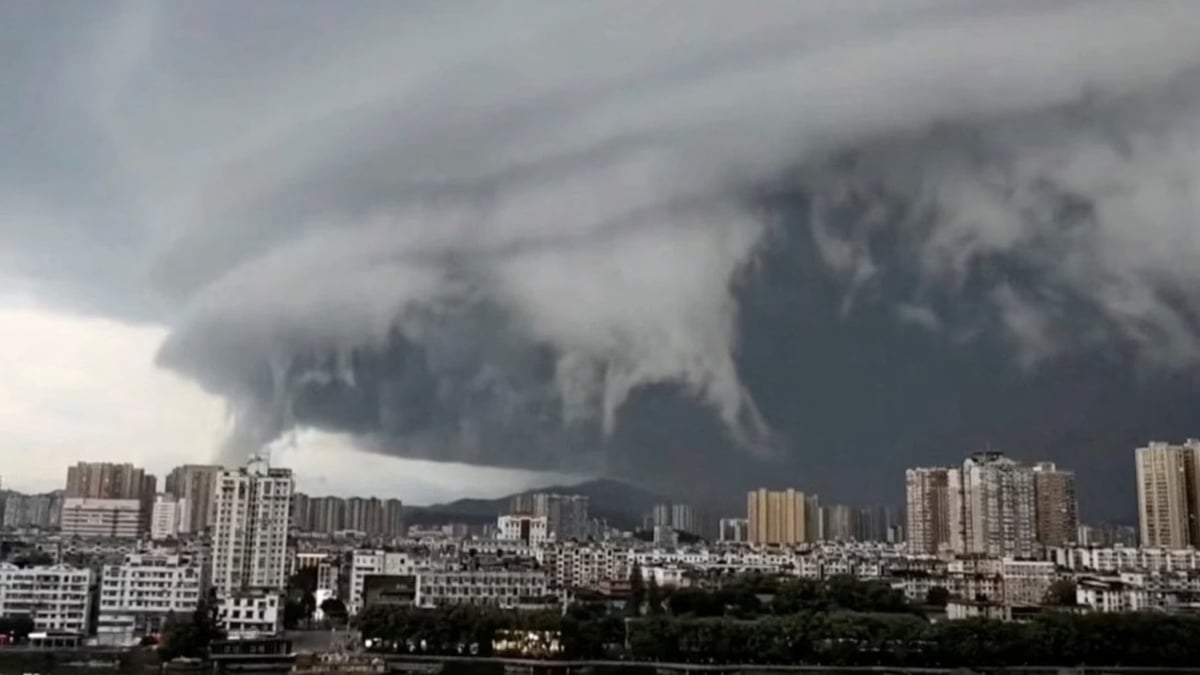
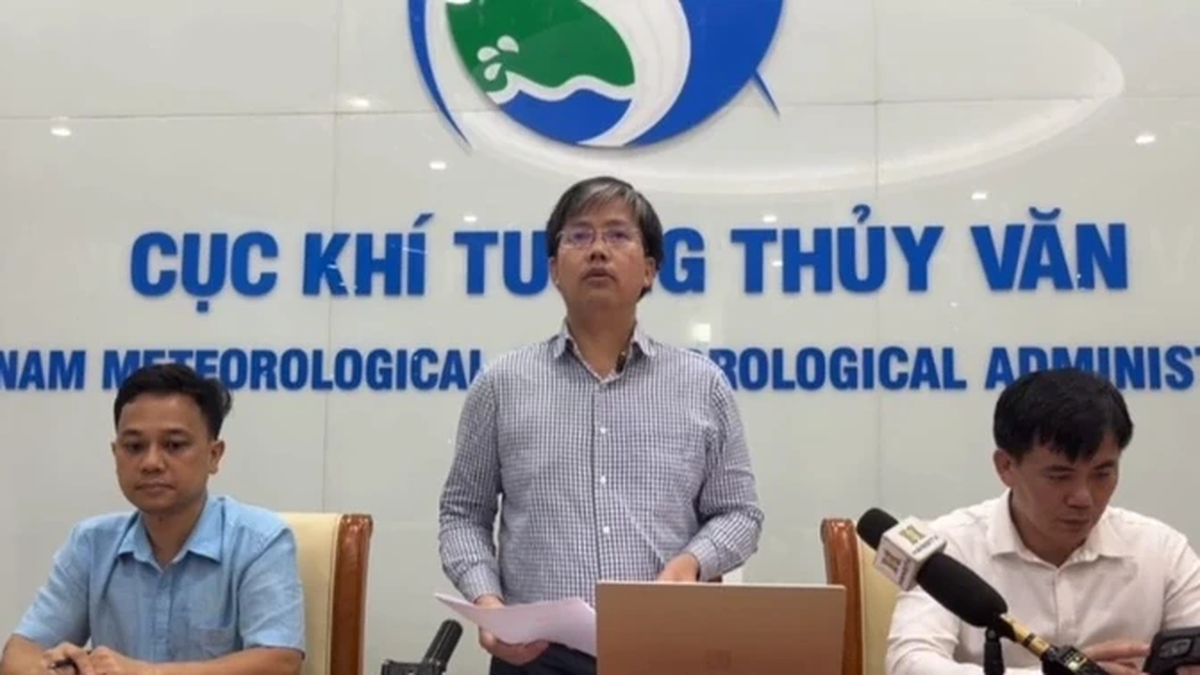
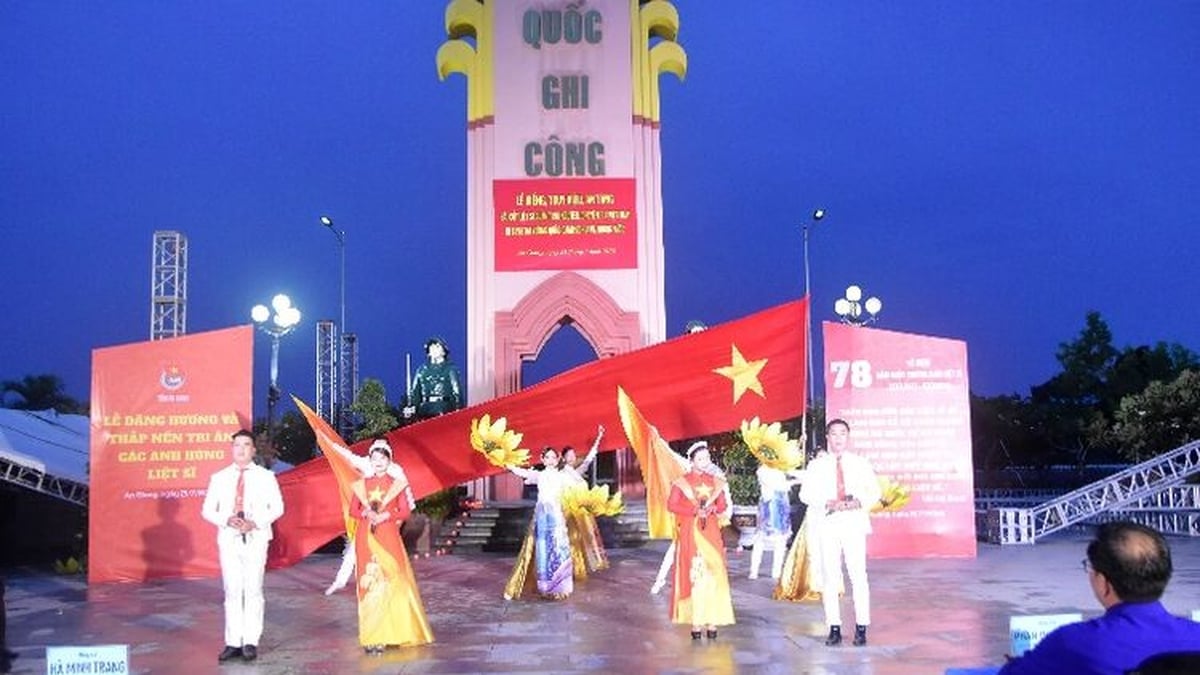
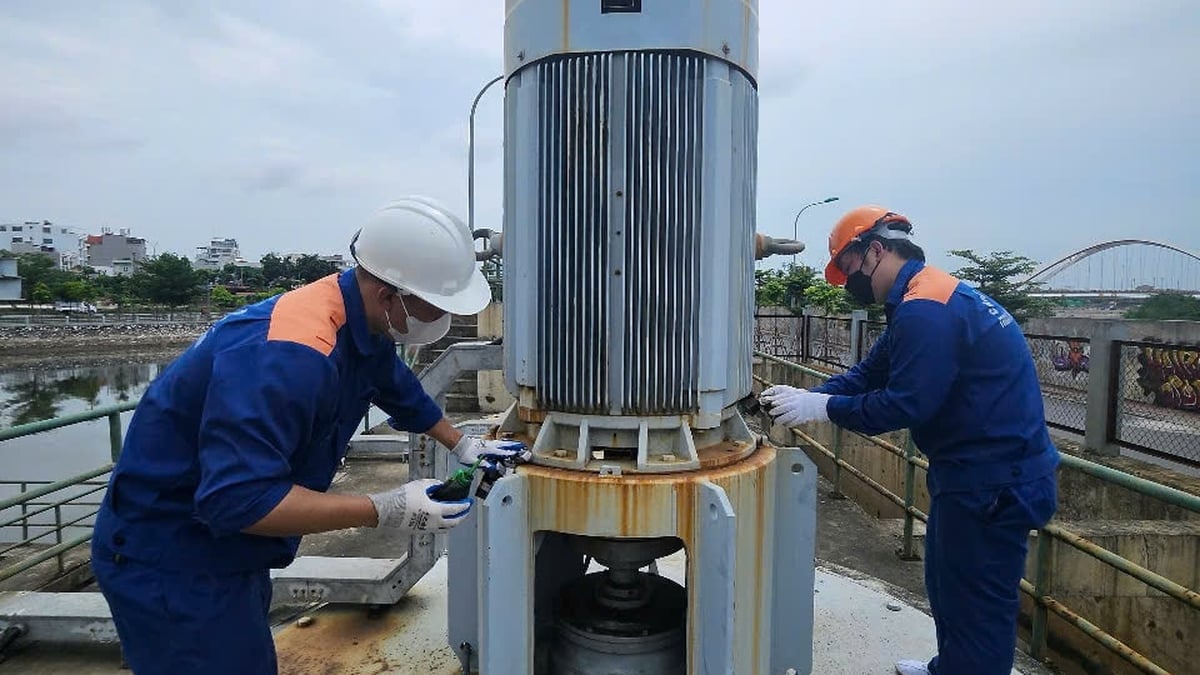
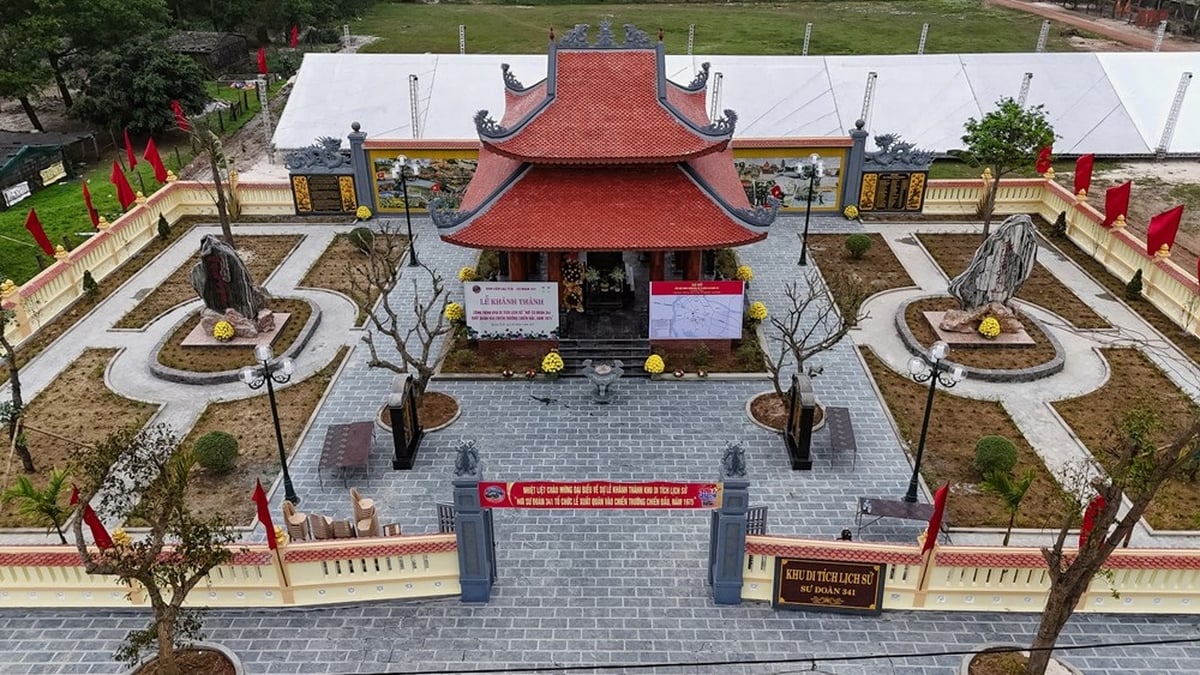
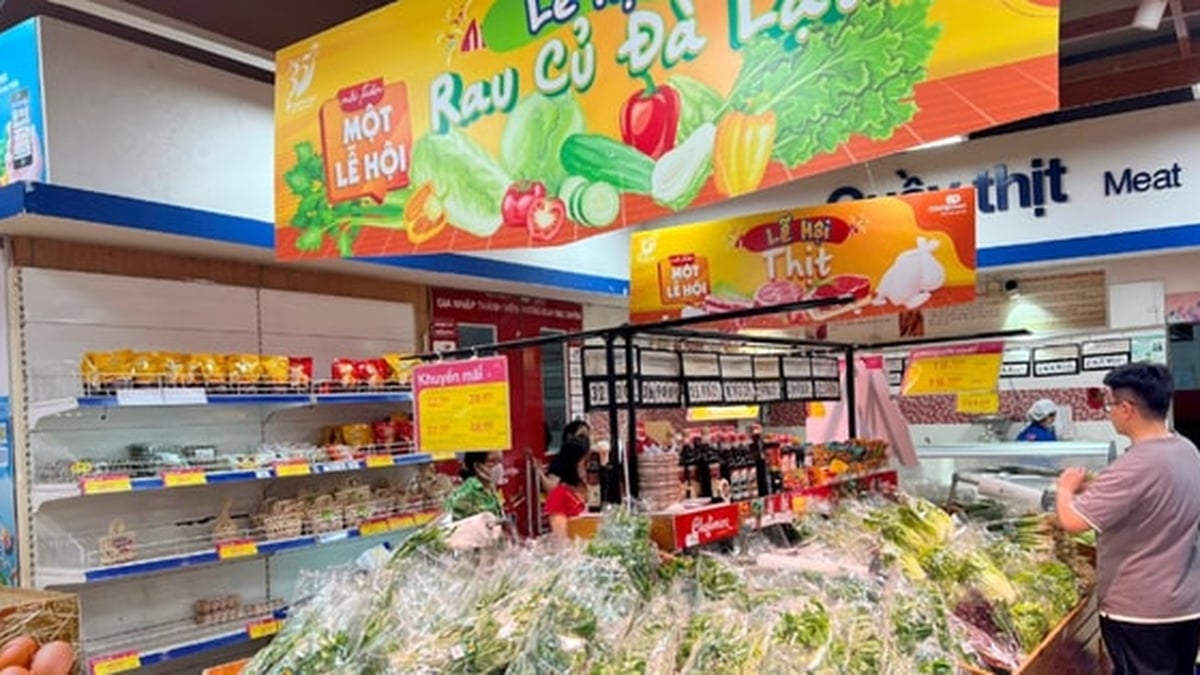
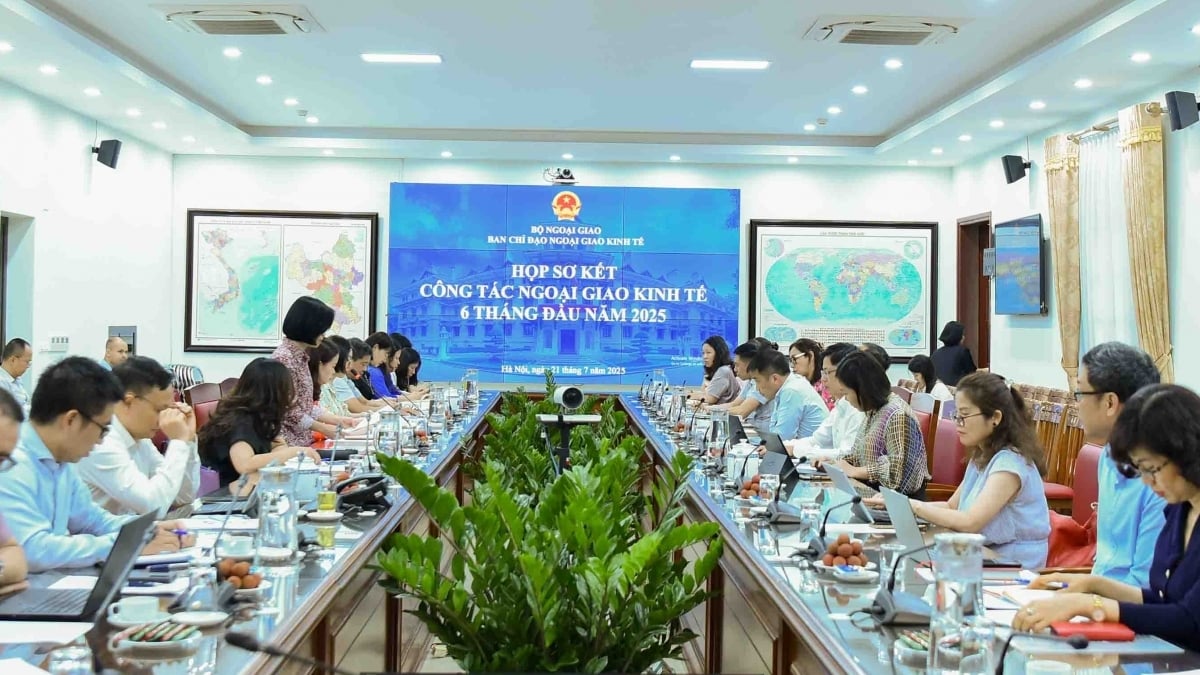
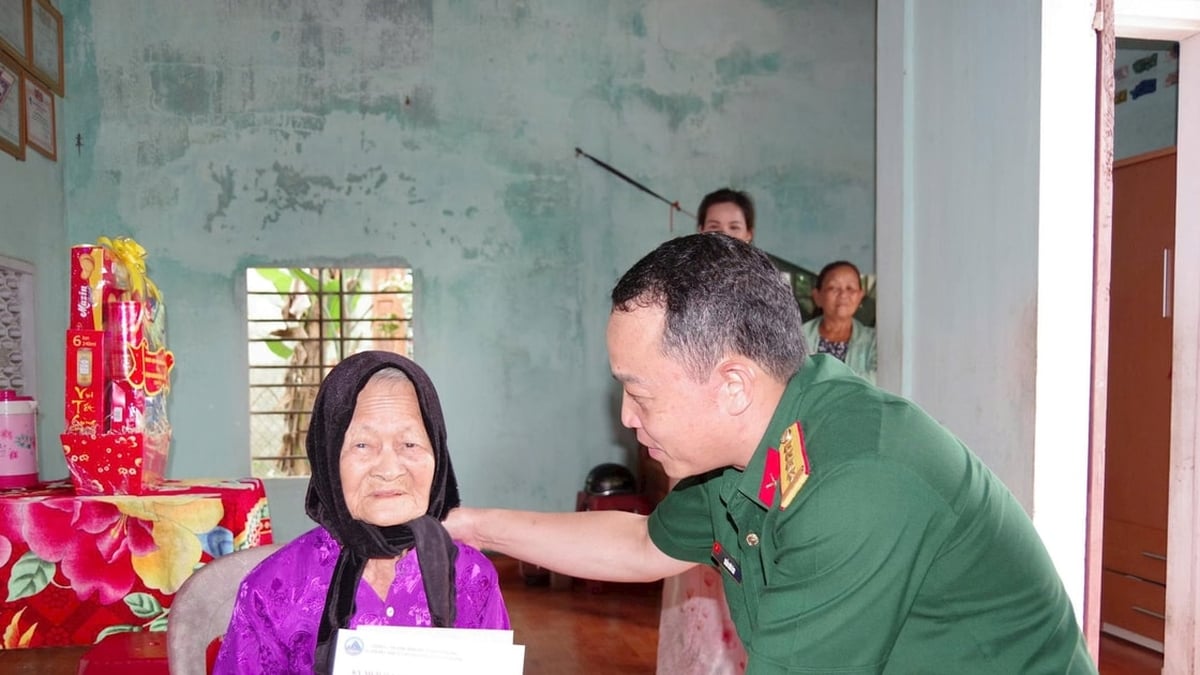










![[Photo] National Assembly Chairman Tran Thanh Man visits Vietnamese Heroic Mother Ta Thi Tran](https://vphoto.vietnam.vn/thumb/1200x675/vietnam/resource/IMAGE/2025/7/20/765c0bd057dd44ad83ab89fe0255b783)









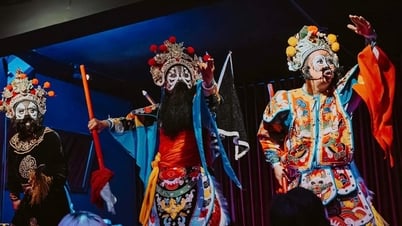

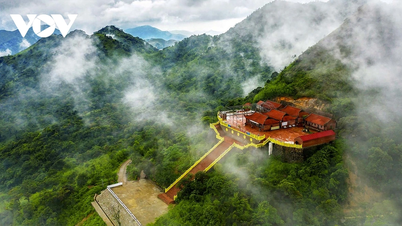



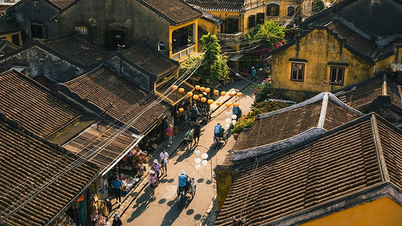



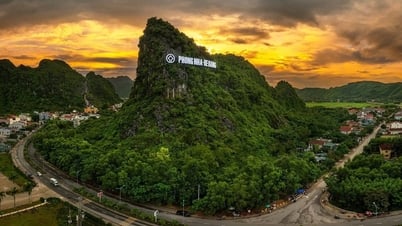



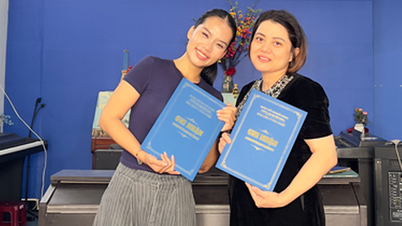
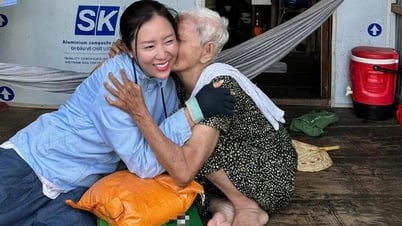
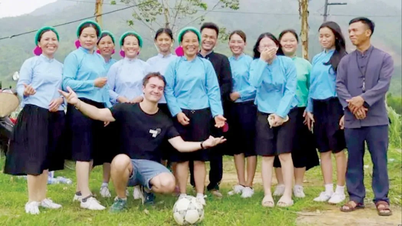

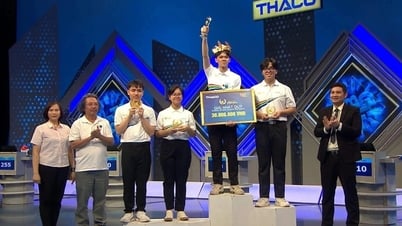

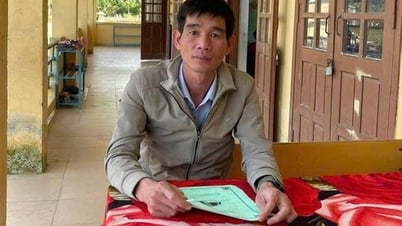
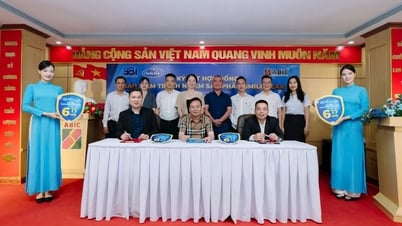


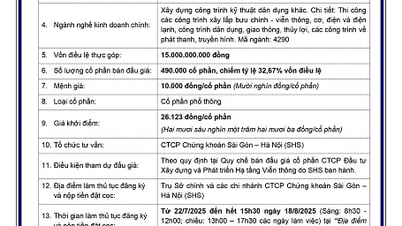
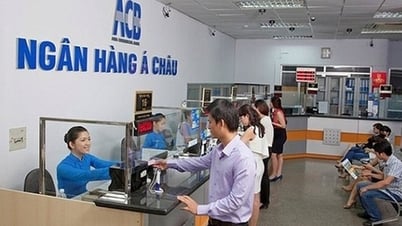



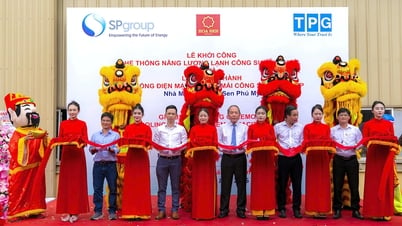
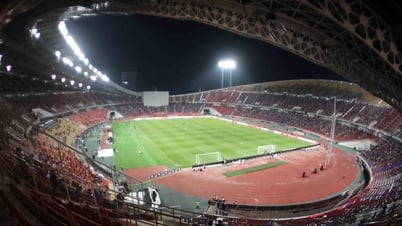

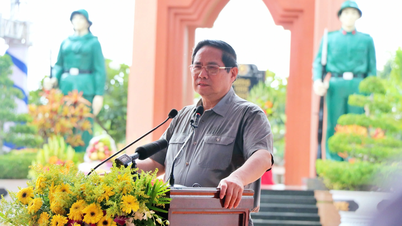
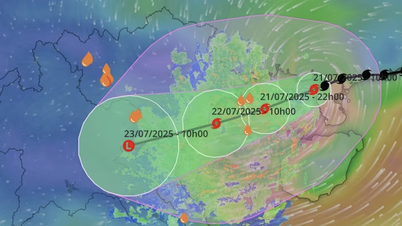

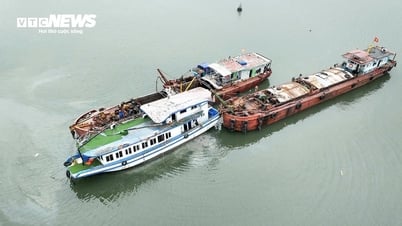


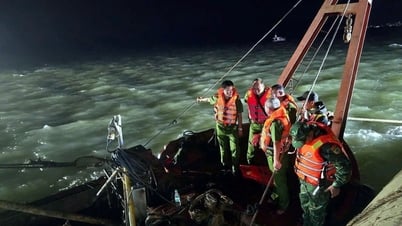
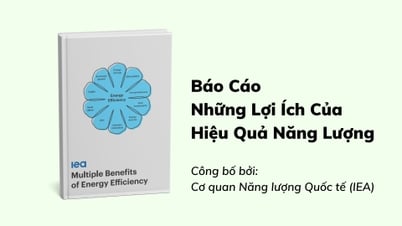



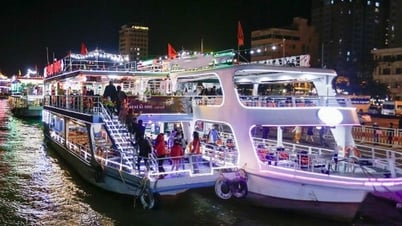

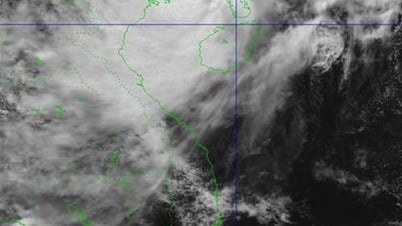
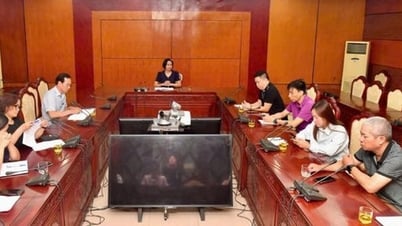
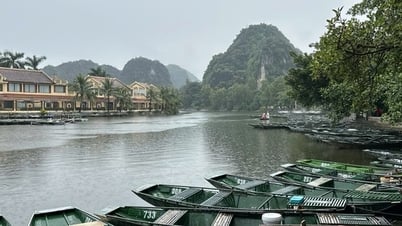

















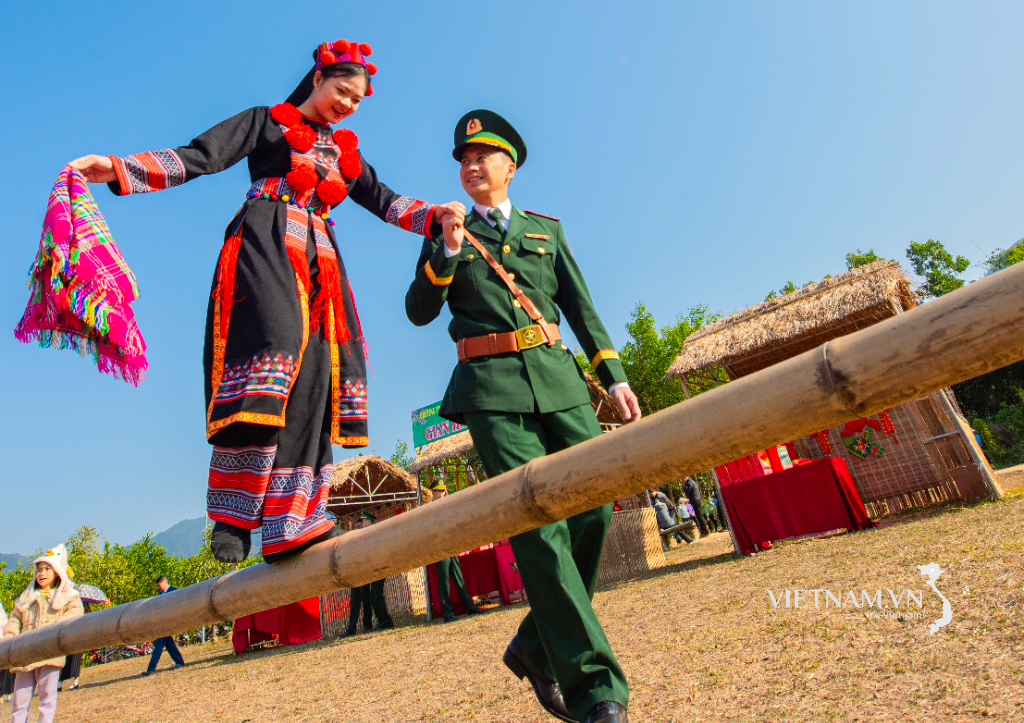
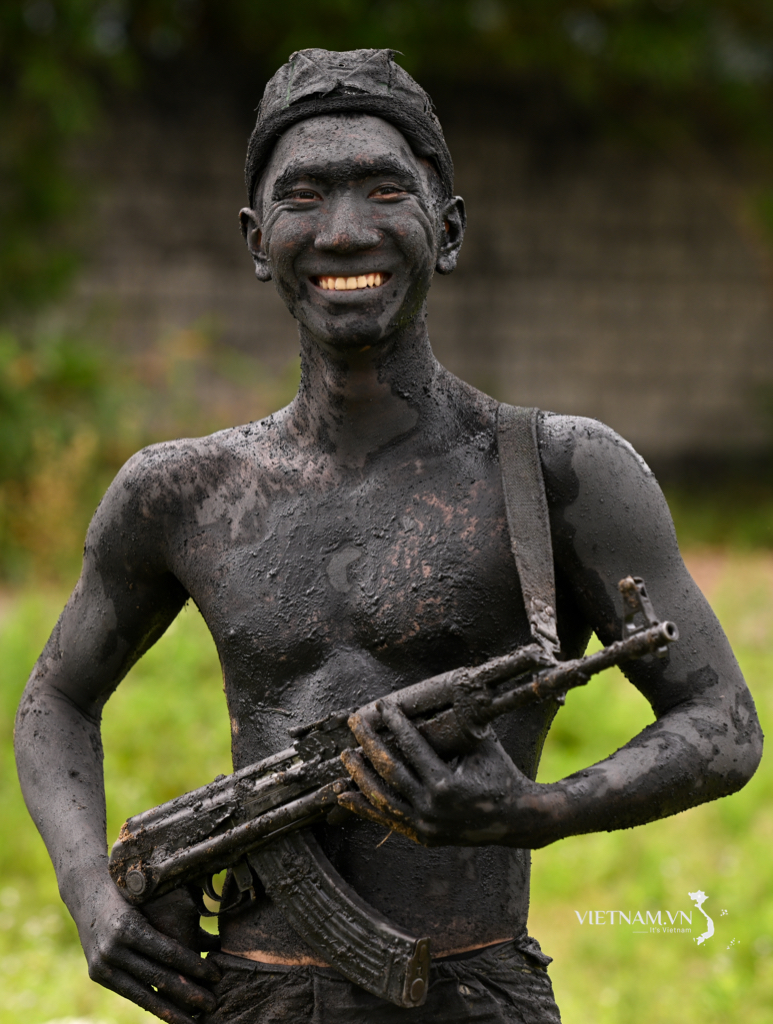
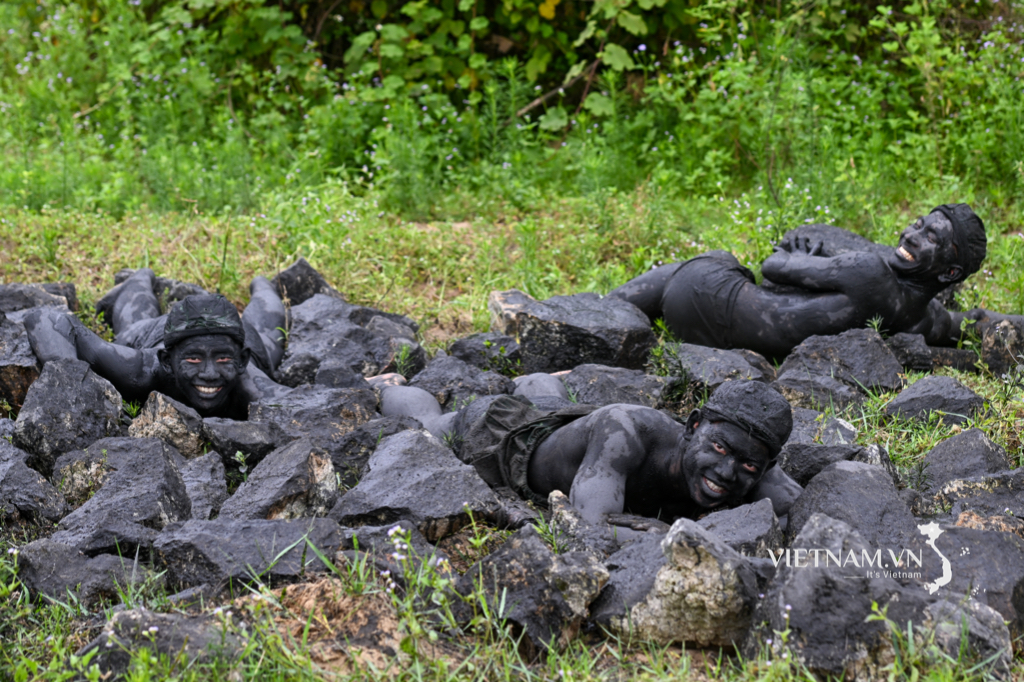
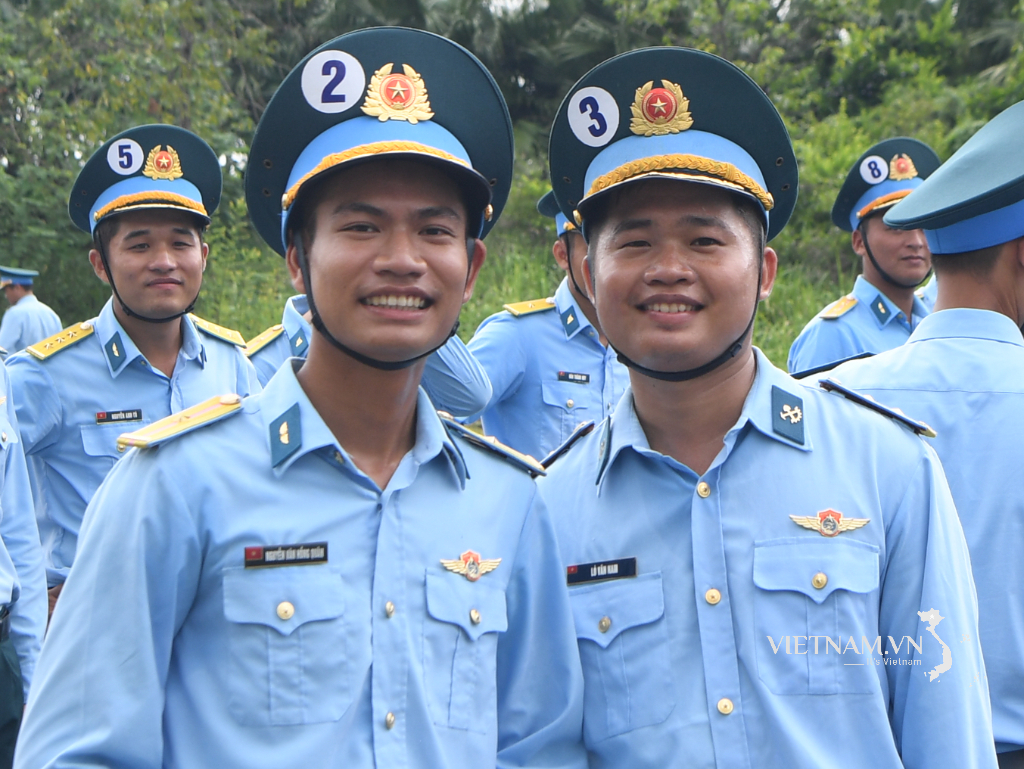
Comment (0)